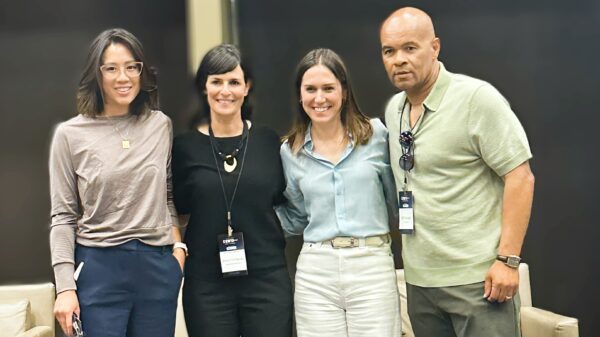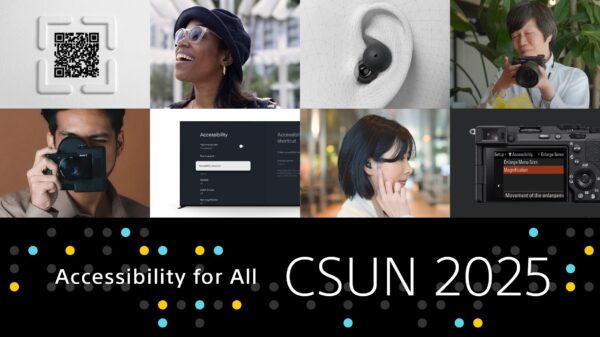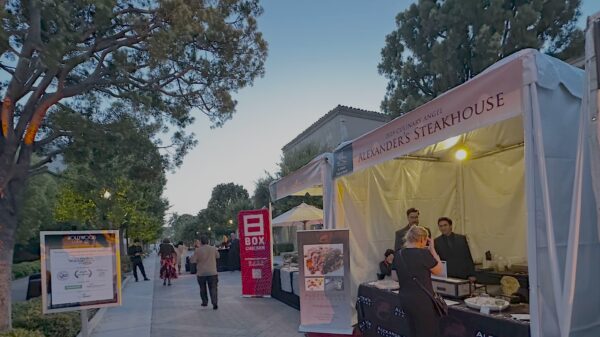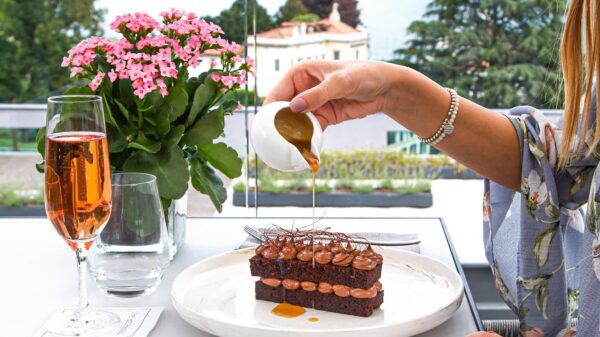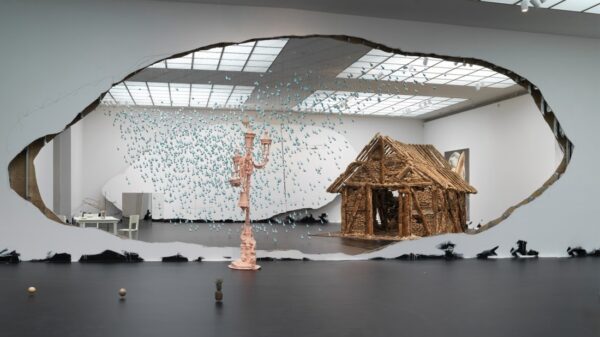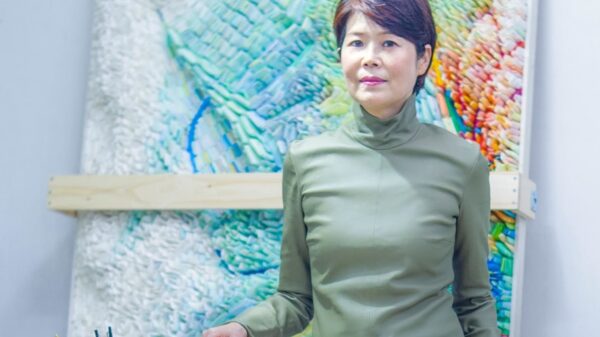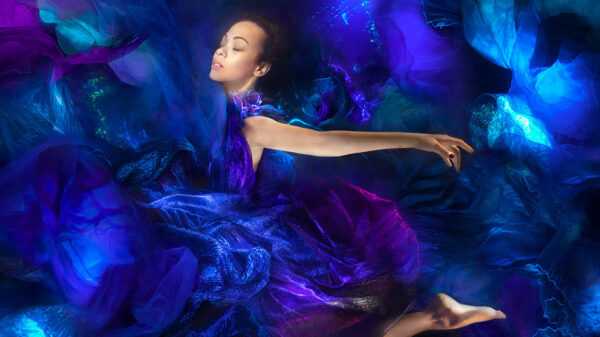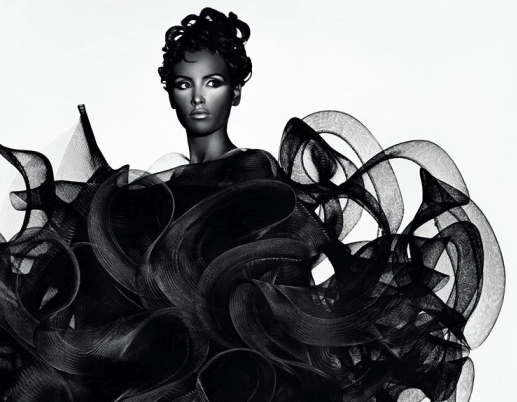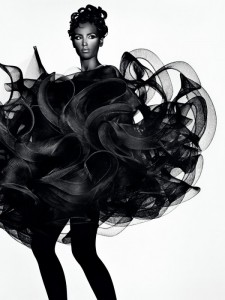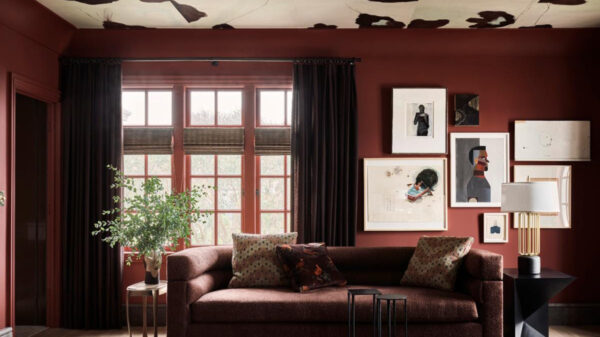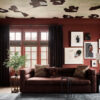The Peabody Essex Museum (PEM) is the exclusive East Coast venue for Future Beauty: Avant-Garde Japanese Fashion, an exhibition of nearly 100 dresses, skirts, gowns and suits that celebrate the ingenuity and innovation of contemporary Japanese fashion designers. Since the early 1980s, designers such as Issey Miyake, Rei Kawakubo and Yohji Yamamoto have reshaped couture as well as popular fashion and launched a revolution that marks the first time a non-Western culture has significantly transformed the global fashion world. Through innovations in form, technique, material and approach, Japanese designers have challenged conventional ideas of beauty and helped recast fashion as a vital and nuanced art form. Co-organized by the Kyoto Costume Institute and Barbican Art Gallery, London, Future Beauty is on view at PEM from November 16, 2013, through January 26, 2014.
“The fashion designers featured in this exhibition are remarkable for their daring visions, bold wit and incisive creativity,” said Lynda Roscoe Hartigan, PEM’s James B. and Mary Lou Hawkes Chief Curator and the exhibition’s coordinating curator. “Through their designs we are exposed to alternate definitions of beauty, new ways of considering the human form and insight into some of the most provocative artistic minds working today.”
The fundamentals of haute couture in Europe and America — highly sexualized fitted forms, balance, finish, invisible tailoring and complementary color and pattern — are noticeably absent from contemporary Japanese fashion. Instead, imperfection, transience, austerity, asymmetry, roughness, simplicity and subtlety are valued. As designer Yohji Yamamoto affirmed, “I think perfection is ugly. Perfection is a kind of order … things someone forces onto a thing. A free human being does not desire such things.” The avant-garde visions featured in Future Beauty carve a new aesthetic path forward, one that bridges tradition and innovation while charting a new understanding of what beauty can be.
In Praise of Shadows
A watershed moment for Japanese fashion occurred at the now legendary Paris catwalk show in 1983 where designers Rei Kawakubo and Yohji Yamamoto debuted their black and white collections. Asymmetric and sculptural, Kawakubo and Yamamoto’s forms enveloped, rather than revealed, the body in a way that radically rejected the trending obsession with body consciousness and form-fitting silhouettes. Through variability, imperfection and layering, Kawakubo’s Autumn/Winter 1983-84 ensemble seen here emphasizes the contrast generated by the textures and looseness of layered fabric. Their “new black” became the “in” color and widely influenced Western designers.
Jun’ichirō Tanizaki’s influential 1933 essay In Praise of Shadows is often credited for Japanese designers’ gravitation toward asymmetry, layering and use of darkness. Fascinated with shadows as dynamic, shifting spaces, Tanizaki posited that, “the collision between the shadows of traditional Japanese interiors and the dazzling light of the modern age.”
Tradition and Innovation
After World War II, the development of synthetic and industrial fabrics expanded Japan’s legacy of creating sophisticated textiles. New techniques and processes were devised for weaving and dyeing a range of materials — from silk and paper to polyester and stainless steel — resulting in a host of new textures, visual effects and creative possibilities. Junya Watanabe’s voluminous honeycomb construction, seen in his Autumn/Winter 2000-01 Techno Couture collection, exemplifies this ultra-modern approach to fashion that unlocked the potential of using fabric as a sculptural material.
Flatness
Counter to the prevailing Western emphasis on the tailored form and traditional dressmaking conventions, contemporary Japanese fashion delves into the tension between flatness and form. Voluminous garments embody the Japanese concept of ma, a uniquely Japanese aesthetic concept that refers to the energetic potential of space. Wearing a garment activates the space it defines and transforms it from a two-dimensional garment to a three-dimensional experience. Hiroaki Ohya’s The Wizard of Jeanz collection explores this concept in a particularly clever manner. Presented as a series of books, Ohya’s works unfold like giant paper lanterns into a range of voluminous garments such as skirts and capes. Riffing on the geometric principles of origami, modern Japanese designers continue to explore new ways of expressing form and dimension.
Cool Japan
Japan’s street culture enjoys an explicit relationship with high fashion. Since the mid-1990s, Tokyo’s Shibuya and Harajuku districts have gained a global reputation as hot spots of youth fashion: from the Lolita look typified by young girls’ predilections for everything kawaii (cute), cosplay (costume play) and manga characters such as Hello Kitty and Astro Boy, to the reinterpretation of gothic, punk and hip-hop. In 2002, the international press coined the phrase “Cool Japan” to describe the country’s ascendancy as a cultural superpower. In reinterpreting these looks, Japan’s pioneering designers play with the cute and strange, the beautiful and the ugly. The result is highly eclectic, fun and nonconforming.
In addition to immersive, large-scale fashion runway show videos, Future Beauty features contemporary Japanese fashion pieces that visitors can try on to experience these unique design attributes firsthand. Select ensembles from Future Beauty also appear in PEM’s Japanese and Japanese Export Art galleries to inspire aesthetic connections that span time.
PEM’S FASHION INITIATIVE
Future Beauty is an important building block in PEM’s new fashion initiative, undertaken as the next chapter for one of the country’s leading collections of historic costumes and textiles from around the world. PEM’s fashion initiative began in 2009 with Rare Bird of Fashion: The Irreverent Iris Apfel, followed last year by Hats: An Anthology by Stephen Jones and continuing in 2015 with a fresh focus on Native American fashion.
EXHIBITION CREDIT
Co-organized by the Kyoto Costume Institute and Barbican Art Gallery, London. Support provided by the Japan Foundation, Wacoal Corporation and the East India Marine Associates of the Peabody Essex Museum.
EXHIBITION SPONSOR
IMAGES (TOP TO BOTTOM)
Koji Tatsuno, Autumn/Winter 1993-94 (detail). Collection of the Kyoto Costume Institute. Gift of Mr Koji Tatsuno. Photo by Richard Burbridge.
Rei Kawakubo for Comme des Garçons, Autumn/Winter 1983-84. Collection of the Kyoto Costume Institute. Gift of Comme des Garçons Co., Ltd. Photo by Masayuki Hayashi.
Junya Watanabe for Junya Watanabe Comme des Garçons, Autumn/Winter 2000-01. Collection of the Kyoto Costume Institute. Photo by Takashi Hatakeyama.
Hiroaki Ohya for Ohya, Spring/Summer 2000. Collection of the Kyoto Costume Institute. Photo by Masayuki Hayashi.
Naoki Takizawa for Issey Miyake, Spring/Summer 2004. Artworks: ©Aya Takano/Kaikai Kiki Co., Ltd. Collection of the Kyoto Costume Institute. Gift of ISSEY MIYAKE INC. Photo by Takashi Hatakeyama.
PRESS IMAGES
A selection of high-resolution press images and captioning information is available for download from the following link: http://goo.gl/sjENZ5
PRESS RECEPTION
Join us for a press reception and exhibition preview of Future Beauty on Thursday, November 14, from 6:30-9 pm. Kindly respond by Thursday, November 7, to Linnea DiPillo at 978-542-1628 or linnea_dipillo@pem.org.
OPENING DAY FESTIVAL: SATURDAY, NOVEMBER 16 | 10 AM-4 PM
Create, imagine, play and explore during the opening day festival for Future Beauty.
DROP-IN ART MAKING: Cut, Sew and Create | 10 am-4 pm | Create Space 1 & 2
Design your own T-shirt inspired by Future Beauty. We’ll have artists and materials ready to help inspire you.
ARTIST DEMONSTRATION: Designs by Zoe Shi | 10 am-4 pm | Atrium
Zoe Shi, an up-and-coming fashion designer and Rhode Island School of Design student, demonstrates the process of sculpting a garment from fabric. Shi’s work shares the aesthetics of volume and shape present in Future Beauty.
DROP-IN ACTIVITY: 1980s Arcade | 10 am-4 pm | Bartlett Gallery
As Japanese designers were changing the global fashion scene in the 1980s, Japanese video game designers were changing the face of global pop culture with video games such as Pac-Man. Stop by to play some old favorites in PEM’s pop-up arcade!
PERFORMANCE: Chiptune Artist| 11 am and 2:30 pm | Atrium
Chiptune, or 8-bit music, is a synthesized electronic music produced by the sound chips of vintage computers, video game consoles and arcade machines. Hear artist and composer Glenn Dubois create his signature sound.
PANEL DISCUSSION: Future Beauty Today | 1 pm | Morse Auditorium
Explore Future Beauty with PEM’s Chief Curator Lynda Roscoe Hartigan and experts from the fashion world.
FAMILY TOURS: Future Beauty | 1-3 pm | Meet at the information desk
Drop by for a fun, family-friendly tour of Future Beauty led by our expert docents. Learn about some of their favorite garments and ask questions about some of yours. Tours leave from the information desk every 15 minutes.
ABOUT THE PEABODY ESSEX MUSEUM
Founded in 1799, the Peabody Essex Museum (PEM) presents outstanding works of artistic and cultural creativity in ways that transform people’s lives. The museum’s collection is among the finest of its kind, showcasing an unrivaled spectrum of American art and architecture as well as outstanding Asian, Asian export, Native American, African, Oceanic, maritime and photography collections. In addition to its vast holding, the museum offers a vibrant schedule of changing exhibitions and an interactive education center. The museum campus features period gardens and 22 historic properties, including Yin Yu Tang, a 200‐year‐old house that is the only example of Chinese domestic architecture on display in the United States. Currently, a comprehensive $650 million Campaign is underway to advance PEM’s mission, fortify its endowment, improve infrastructure and build a 175,000-square-foot expansion.
HOURS: Open Tuesday-Sunday, 10 am-5 pm, and the third Thursday of every month, 10 am-9:30 pm. Closed Mondays (except holidays), Thanksgiving, Christmas and New Year’s Day.
ADMISSION: Adults $18; seniors $15; students $10. Additional admission to Yin Yu Tang: $5. Members, youth 16 and under and residents of Salem enjoy free general admission and free admission to Yin Yu Tang.
INFO: Call 866‐745‐1876 or visit pem.org







